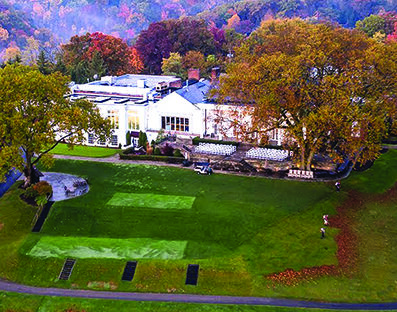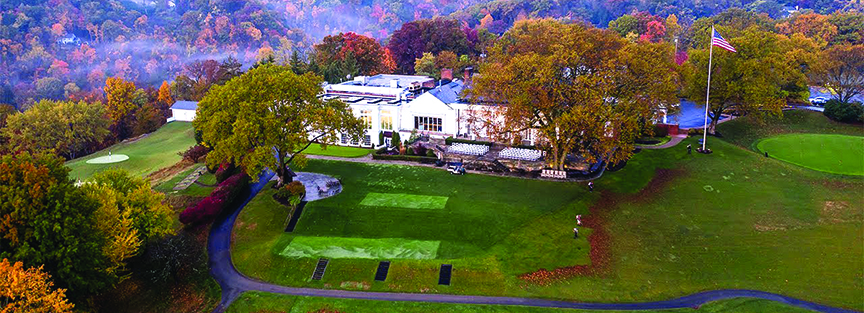
A series on the great clubs, presented by the GHS.
By David Moore
One of the Golf Heritage Society’s first “Heritage Clubs” is the oldest “sporting” club in Western Pennsylvania and one of the oldest in the United States. The Pittsburgh Field Club started as the Pittsburgh Cricket Club as early as 1871 by some accounts. It officially incorporated on April 1, 1882, where the English game continued to reign supreme until golf came to the region in the mid-1890s.
 Golf was first introduced to the club in 1895, when three holes were laid out at the Club’s original location in the Homewood-Brushton neighborhood of Pittsburgh, on a property owned by Carnegie Steel Chairman Henry Clay Frick. In 1896, with the introduction of golf and other sports, the Club was incorporated again and renamed the Pittsburgh Field Club. By 1897, a couple more holes were added and the short, 5-hole course was likely laid out on the cricket grounds. The Field Club became the fifth member of the Western Pennsylvania Golf Association in 1899, and completed four more holes to feature a full 9-hole course by the spring of 1901.
Golf was first introduced to the club in 1895, when three holes were laid out at the Club’s original location in the Homewood-Brushton neighborhood of Pittsburgh, on a property owned by Carnegie Steel Chairman Henry Clay Frick. In 1896, with the introduction of golf and other sports, the Club was incorporated again and renamed the Pittsburgh Field Club. By 1897, a couple more holes were added and the short, 5-hole course was likely laid out on the cricket grounds. The Field Club became the fifth member of the Western Pennsylvania Golf Association in 1899, and completed four more holes to feature a full 9-hole course by the spring of 1901.
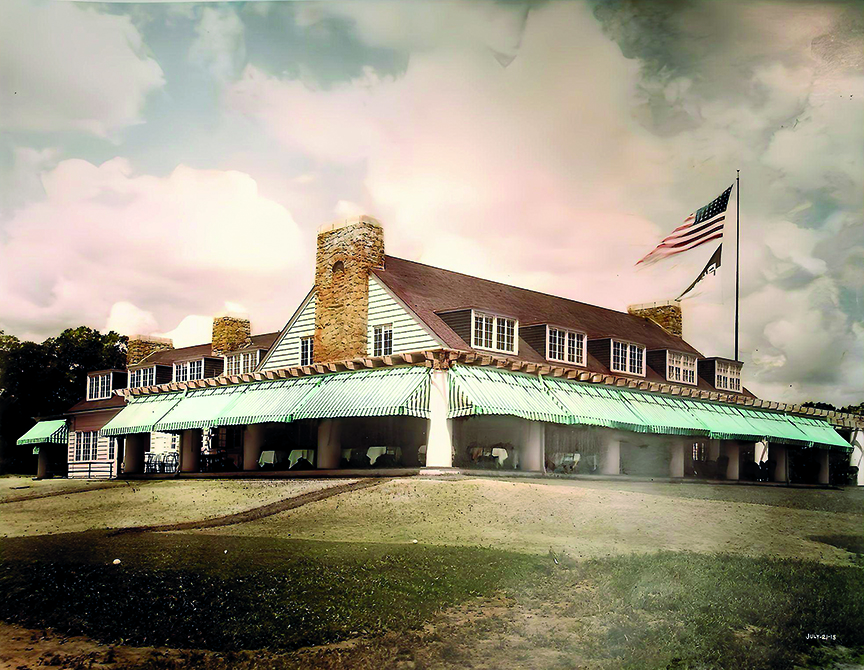
To this day, it is unknown who designed the holes at the Field Club’s original home. There is some speculation that Alexander Findlay laid out a couple of the original holes, beginning an association that would be rekindled when the Club moved to O’Hara Township. The course received some upgrades in 1912 thanks to the hiring of a full time greenkeeper, Harry Laurie, and the Club’s first professional, Carnoustie’s George L. Soutar. While the renovations were well received, they were short lived.
After several years of threats, Henry Frick evicted the Field Club from their home, a result of the overall immigration and housing boom in the first decade of the 20th Century. The membership searched for new property, finding a perfect location across the Allegheny River in a section of O’Hara Township that, at the time, was informally known as Fox Chapel. The 171 acres purchased would house an 18-hole golf course, tennis courts, and a clubhouse. Construction on the clubhouse and grounds began immediately, and both opened to the membership in June 1915.
The new golf course was laid out by Alexander Findlay. A clubmaker, professional, architect, and Harry Vardon’s manager for his 1900 American Tour, many called Findlay the “Father of American Golf.” He left his plans to be constructed by Fred Pickering, who not only produced Findlay’s vision, but finished by his promised date of June 1915.
The only fault in Findlay’s vision was the membership didn’t care for his design. They immediately looked to renovate the course, turning to Donald Ross for help. Due to a clubhouse fire in 1924, the extent of Ross’ involvement has been generally lost to history. The Donald Ross Society has confirmed that Ross did in fact work on the course, and the Field Club’s history book states that Ross was responsible for the renovations of the first five holes and the creation of the modern sixth hole. Local architecture firm Loeffler-McGlynn completed renovations to the back nine in the 1920s. When both renovations were completed, the Field Club course was heralded as one of the finest in the region.
In April 1924, the original clubhouse burned to the ground. The damages were totaled at $300,000 ($5.4 million in 2023), and the only structures to survive were the chimneys. The reconstruction was spearheaded by Alfred J. Diebold, who would be elected Club President later in the year. The clubhouse reopened in 1925 to rave reviews.
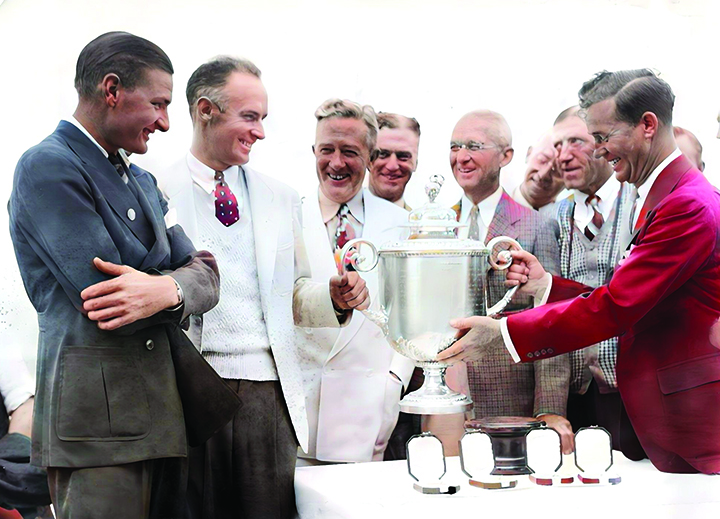
Major championship golf came to the Field Club for the first time in 1937. That May, the PGA Championship was contested across its links, featuring all the big names except Walter Hagen, who was either resting after an African safari or touring Australia, depending on the sources. In the end, Denny Shute became the fourth player in PGA Championship history to win back-to-back championships, defeating Harold “Jug” McSpadden in 37 holes.
In 1959, the Western Golf Association brought the fabled Western Open to the Field Club. Local icon Arnold Palmer played great golf over the first 54 holes, entering the final round tied for the lead, but faltered on Sunday to allow Mike Souchak to claim the biggest victory of his career.
USGA qualifying has also twice occurred here. In 1953, all attempting to qualify at the 1953 U.S. Open had to play a round on the tournament host course, Oakmont, as well as one round at the Field Club. Scores at the Field Club proved to be quite high. In fact, Ben Hogan had to make a difficult putt on the 18th hole just to qualify for the Open he would ultimately win. Qualifying returned in 2003, when the stroke-play rounds of the U.S. Amateur were again split between PFC and Oakmont.
The Field Club has also hosted three notable exhibition matches. In 1918, a Red Cross match was held pitting professionals Walter Hagen and Jock Hutchison against amateurs Chick Evans and Warren K. Wood. The professionals prevailed. Another exhibition was held in 1940 to support the British War Relief effort, pitting Gene Sarazen and Patty Berg against Sam Snead and Helen Detweiler. The Sarazen- Berg duo claimed the fourball match, 1-up. The final exhibition came in 1947, with Ben Hogan and Jimmy Demaret soundly defeating Byron Nelson and reigning U.S. Open champion Lew Worsham, 6&4.
The Field Club also has a unique distinction – being home to one of Arnold Palmer’s best 54 golf holes. The 1977 book Arnold Palmer’s Best 54 Golf Holes, scribed by the King with the help of Pittsburgh Press writer Bob Drum, features the Field Club’s 12th hole among the top 54. The book notes how the high scores in 1953 U.S. Open qualifying were often caused by the 12th hole, which was played as a 459-yard par-4. Noted in the book, during the 1940 exhibition, Sam Snead, a notorious long-hitter, had to hit driver-driver to hit the green, commenting “I bet all the members get home here in two.”
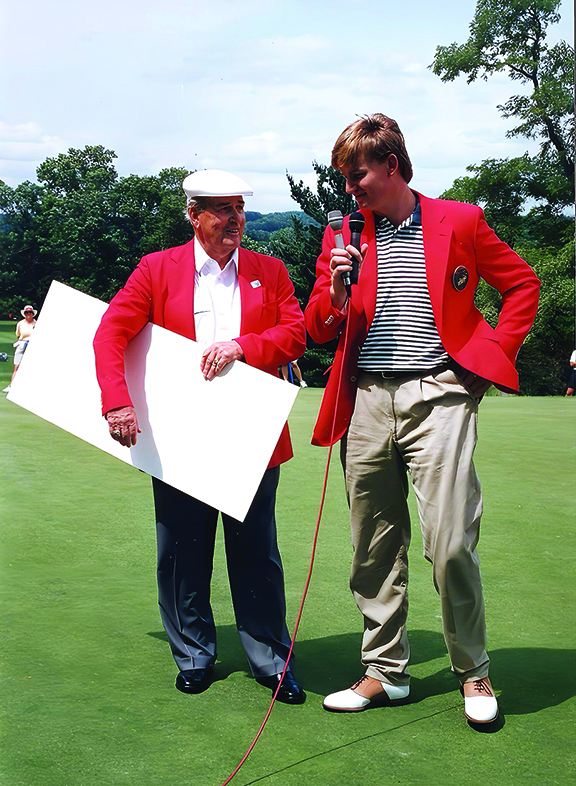
Frank Fuhrer and His Sponsorship of the Game
Frank B. Fuhrer Jr. was an avid sportsman before he took up golf. Born in 1925, he was a star football player at East Brady High School before going on to letter 13 times at Allegheny College in football, basketball, baseball, and soccer. He took up golf as a young professional, was a long-time member of the Field Club and Oakmont, and at his peak was three-handicap. In his professional life, he owned Fuhrer Wholesale Company, a beer distributorship that grew to become the 20th largest in the United States, with annual revenues averaging $300 million.
Fuhrer’s deep passion for golf evolved over the years from playing to leadership. In the early 1980s, he started the Family House Invitational. The two-day PGA Tour event often featured many of the Tour’s top stars, and rotated annually between the Field Club, Oakmont, Laurel Valley, and St. Clair Country Club. The tournament supported Family House, a housing facility charity for individuals fighting cancer or receiving transplants, raising over $2 million annually from the proceeds. The event itself cost millions to host, which Fuhrer funded from his own pockets.
The final Family House Invitational was hosted at the Pittsburgh Field Club in June 1995. The field included major champions Fred Couples, Ernie Els, Phil Mickelson, Lee Janzen, and the local legend, Arnold Palmer. On the first day, both Els and Couples fired course record setting 61s in the pro-am portion of the event. On the second day, Couples faded while Els defeated Steve Stricker in a playoff to claim the title and the $170,000 winner’s check.
After the Family House event ended, Fuhrer continued his sponsorship of the game. He founded the Frank B. Fuhrer Invitational, a mini-tour event that invited the top young professionals from across the country and many of the local club professionals and top amateurs from the Pittsburgh region. The Field Club served as the tournament’s annual host. The 2023 tournament was the final installment of the Fuhrer, after Mr. Fuhrer passed away in May 2022 at the age of 96.
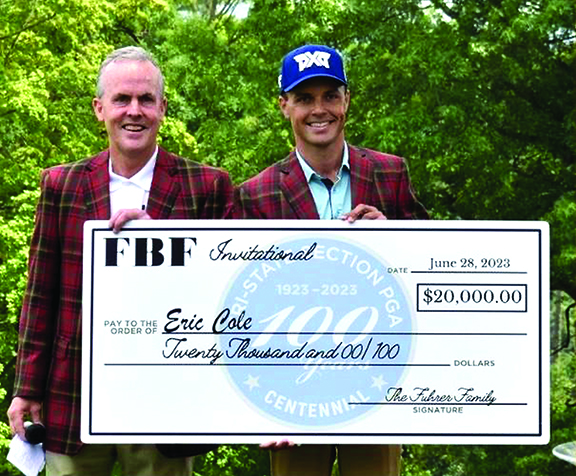
Among the winners of the Fuhrer are 2025 U.S. Walker Cup team captain Nathan Smith, Chase Koepka, brother of 5-time major champion Brooks Koepka, and Eric Cole, the 2023 PGA Tour Rookie of the Year. In fact, Cole, the son of former LPGA Tour player Laura Baugh, won the final Fuhrer Invitational this past summer (2023). He finished T24 at the Travelers Championship that prior Sunday, and proceeded to drive overnight, over eight hours, to reach his Monday tee time after his flight to Pittsburgh was canceled. He fired an electric 11-under, 269 to win the event by nine shots over defending champion David Bradshaw.
The event and the man himself played a huge role in Cole’s ascendance in 2023. In 2014, Mr. Fuhrer invited Cole, a struggling mini-tour player at the time, to participate in the event. Funds were tight and Cole paid the entry fee on his credit card before winning the event. The $40,000 check kept Cole’s dream alive, which fully came to fruition in 2023, when he finished 32nd in the FedEx Cup standings. “Mr. Fuhrer gave me the chance to play here, and it saved my career when I won.” Cole told the assembled crowd. “It’s a high honor for me to win the last edition of this tournament, and it was something very important to me.” In the spirit of Mr. Fuhrer, Cole donated the entire $20,000 winner’s check to local Pittsburgh charities.
The oldest sporting club in Pittsburgh has a long, storied history. As the club remembers its past, it is beginning to look ahead to its future. In just eight years, PFC, one of the oldest clubs in the United States, will celebrate its 150th anniversary. The work for that celebration has already begun, as the Club founded a Heritage Committee in 2023. It is proud to be the first “Heritage Club” of the Golf Heritage Society!
The PFC Elevator
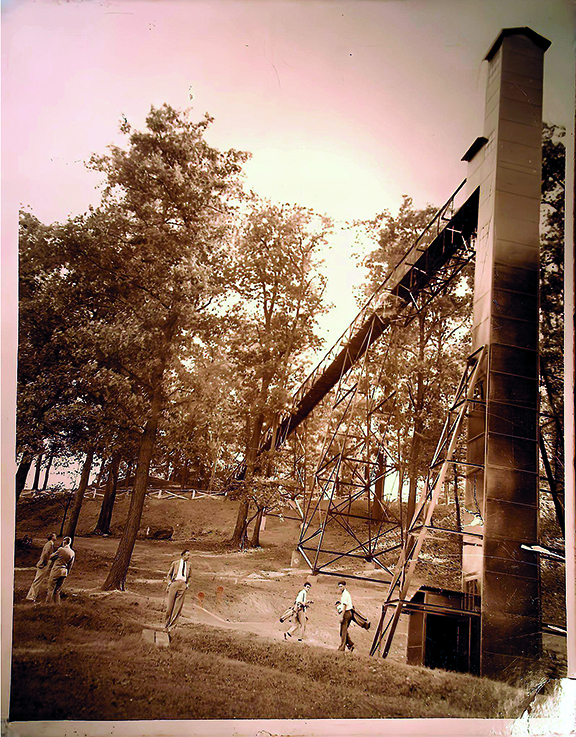
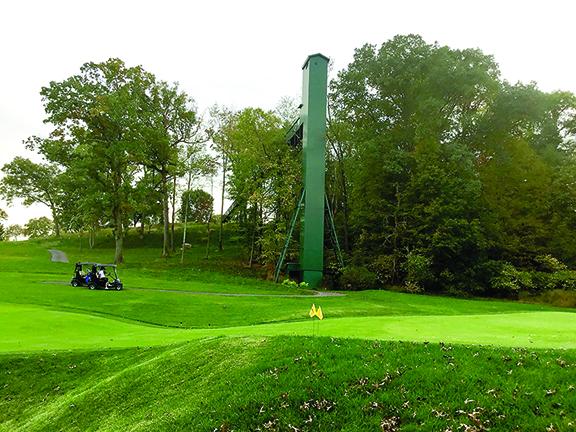
One of the defining characteristics of the Pittsburgh Field Club is the six-story elevator situated at the base of the 17th green. Originally, the 18th hole was played as a severely uphill, 277 yard par-4, culminating in a green atop a perch called “Pike’s Peak.” In 1930, the first renovation was made to lessen the severity of the climb, with over 4,000 yards of dirt brought and a new tee created. The severity of the climb was cause for concern even after the 1930 renovation, especially in an era before golf carts. Many worried that someone would suffer cardiac arrest if they made the climb on a hot summer day. In fact, there are numerous legends around the Club that individuals had in fact died making the climb. Whether the stories are true or not, changes were made following the 1937 PGA Championship. In 1938, the final renovation was made. The solution to the climb was the erection of a 6-story elevator, then a 265-foot walk across a suspended footbridge. The hole transformed into a long par-3, with the tee box at the end of the footbridge, playing back toward the clubhouse. The elevator is still in use today. In 2023 alone, over 8,000 players and caddies took the 39-second, 70-foot elevator ride, with the average annual number around 10,000.
Author’s Note: All of the photos provided by the Pittsburgh Field Club have been enhanced using Artificial Intelligence (AI). These AI photo enhancing services used by the author have helped bring these photos into the modern age, returning their outstanding original definition and, in some cases, turning black and white photos to color.
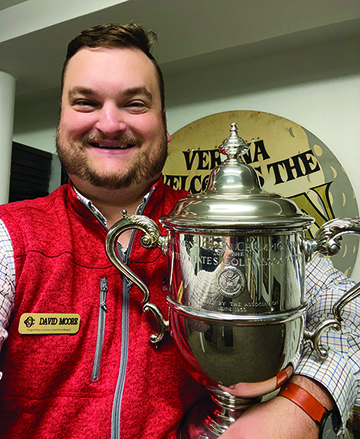
David Moore, Region 2, serves as the Curator of Collections at Oakmont Country Club and Curator of History at Allegheny Country Club. Since 2022, Dave has also worked as an independent historical consultant for country clubs across the United States, including the Pittsburgh Field Club. His writing was recognized by the GHS with the 2022 Golden Quill Award. To see his current projects or for inquiries on his services, follow Dave on Twitter/Instagram at @ pagolfhistorian, or email him at dmoorehistorical@gmail.com.

